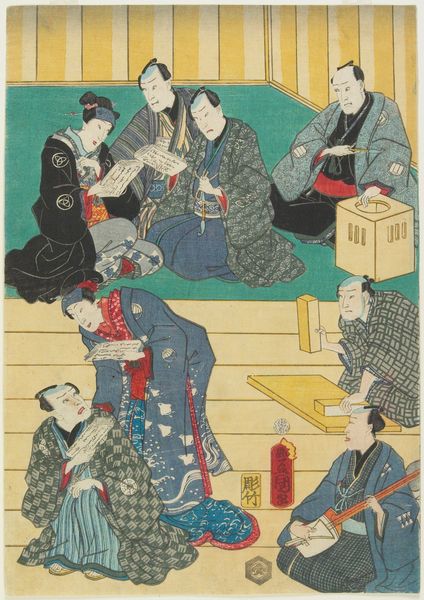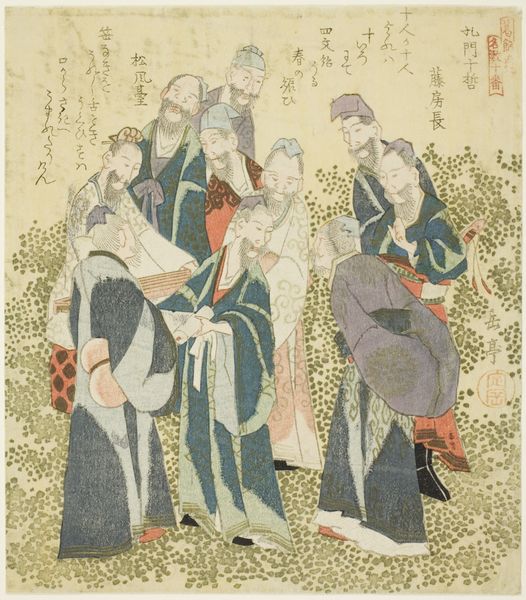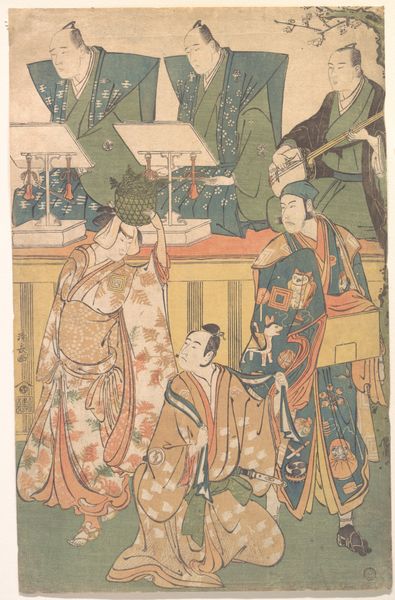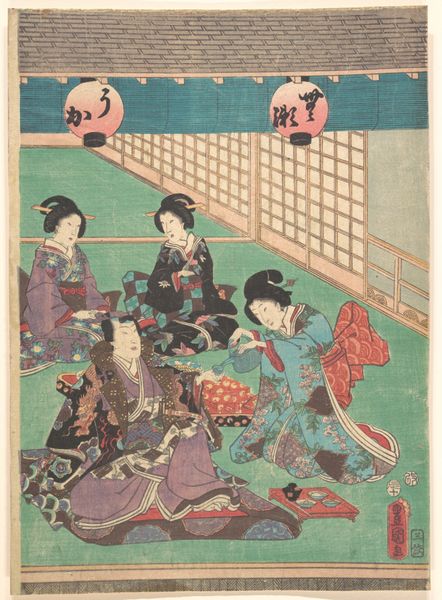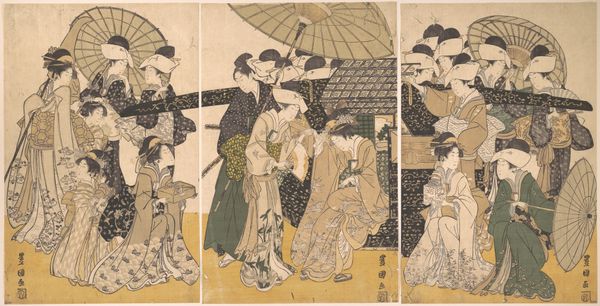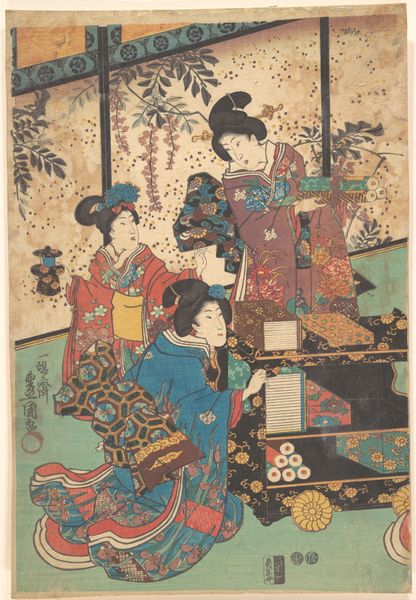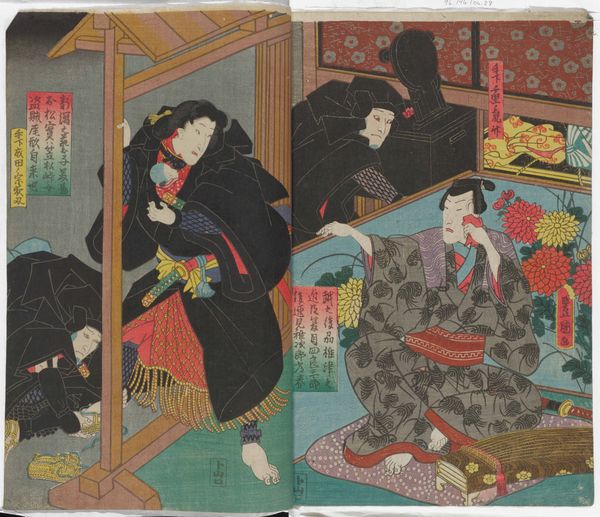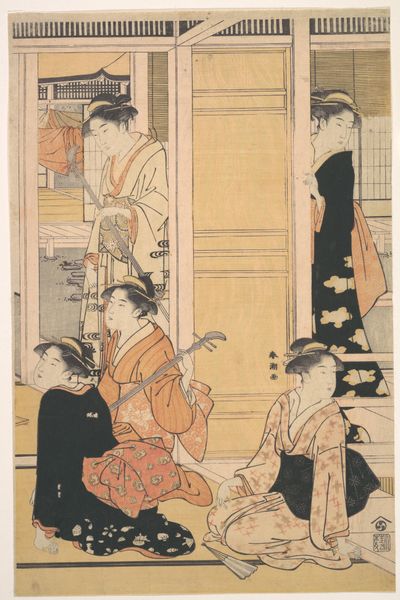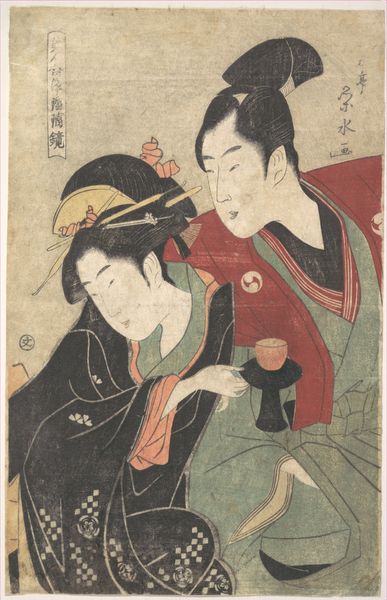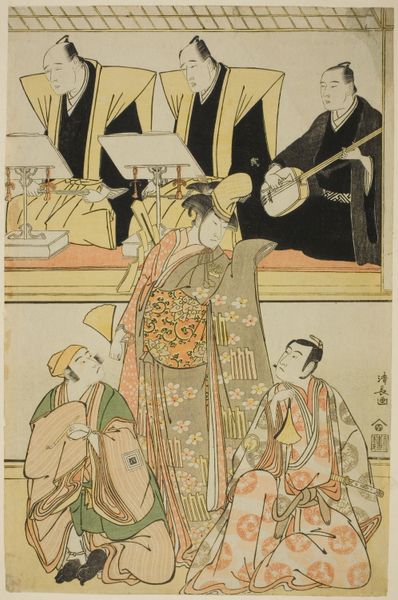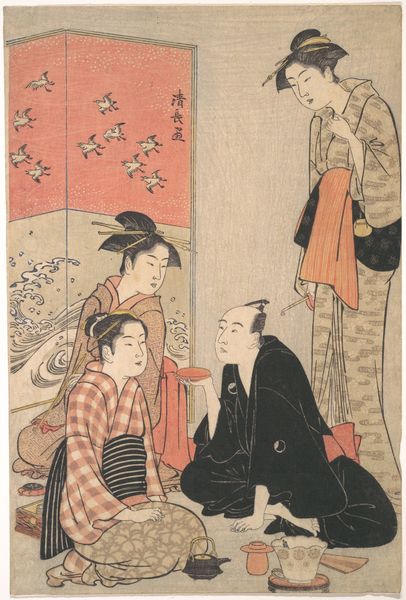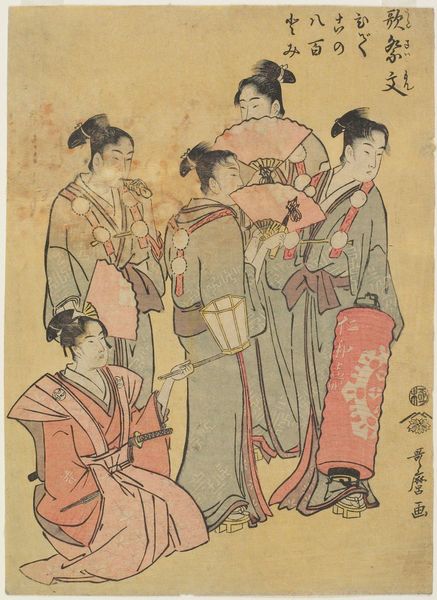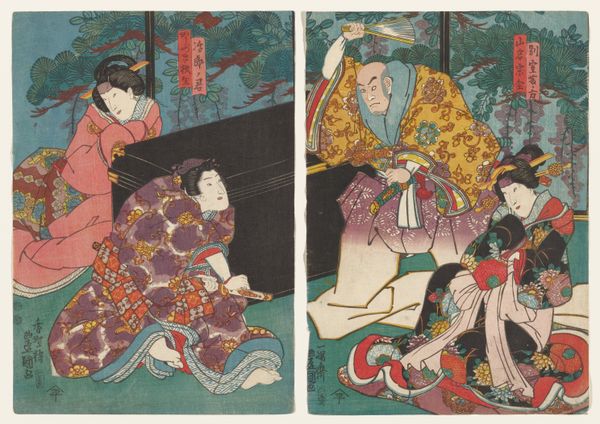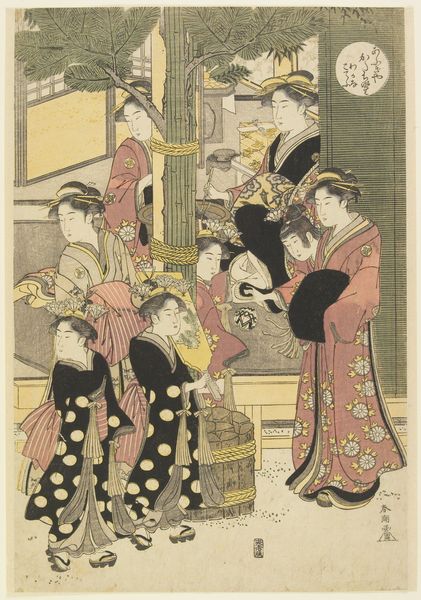
print, ink, woodblock-print
#
portrait
# print
#
asian-art
#
ukiyo-e
#
japan
#
ink
#
woodblock-print
Dimensions: 13 3/4 × 9 5/8 in. (34.9 × 24.5 cm) (image, sheet, vertical ōban)
Copyright: Public Domain
This woodblock print by Utagawa Kunisada, depicts Nakamura Tsuruzō I and other actors, their expressions and costumes rich with symbolic weight. Note the onnagata, a male actor in a female role, with his poised demeanor and colorful kimono. This recalls the themes of transformation found in ancient rituals of masking. Here, the actor's attire and gestures aren’t merely decorative. They're potent symbols, culturally charged, and resonant of societal roles and expectations. The precise coiffure or the specific patterns on the kimonos reflect the complex semiotics of the Edo period, where fashion served as a language of class and identity. Such visual cues resonate far beyond this artwork’s frame. The way these actors present themselves mirrors a broader human tendency to adopt roles and identities, reflecting how collective memory and subconscious desires shape performance and self-expression. This cultural mirror can, in turn, trigger deep emotions, engaging us with the complexities of representation and reality. This is an eternal return of the masked figure and the cultural narrative it performs.
Comments
minneapolisinstituteofart almost 2 years ago
⋮
This pentaptych which misses the first sheet (far right) is titled Assembly to Practice the Three Towers. Behind the stage, the most famous kabuki actors of the day are rehearsing scripts. They were written by the three renown playwrights referred to in the title as Towers: Segawa Jokō III (1806-81), Kawatake Mokuami (1816-93), and Sakurada Jisuke III (1802-77). Collectors of prints like this could easily identify the actors by their faces but not so much the playwrights, hence red cartouches with their names were placed besides them.
Join the conversation
Join millions of artists and users on Artera today and experience the ultimate creative platform.
